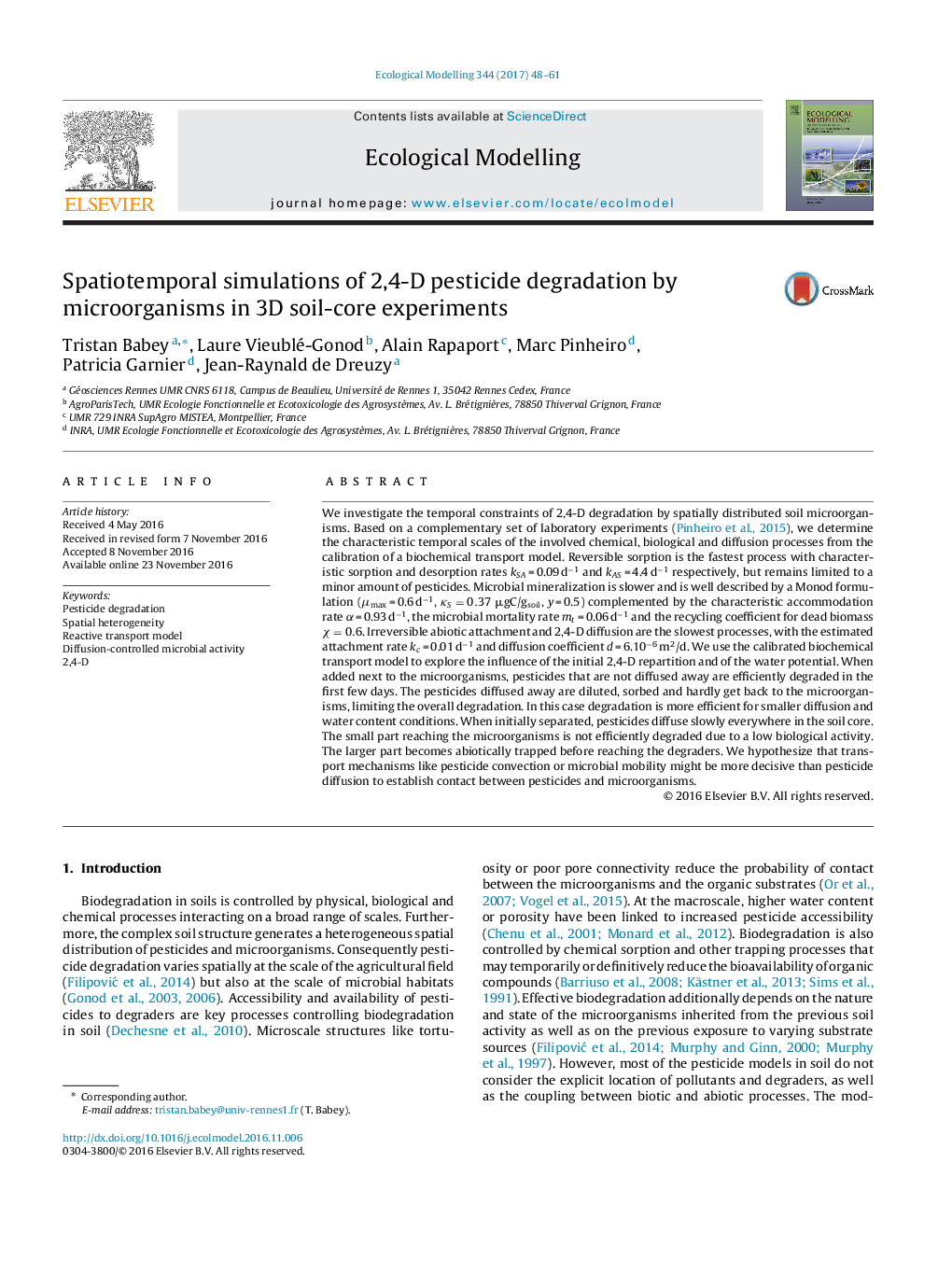| کد مقاله | کد نشریه | سال انتشار | مقاله انگلیسی | نسخه تمام متن |
|---|---|---|---|---|
| 5742279 | 1617403 | 2017 | 14 صفحه PDF | دانلود رایگان |

- Calibration of a 2,4-D degradation, sorption and diffusion model from experiments.
- Degradation in hotspots is enabled by fast microbial kinetics.
- Microbial activity is limited by 2,4-D dilution and abiotic trapping.
- Slow diffusion is not an efficient 2,4-D delivery mechanism to hotspots.
- Heterogeneous degradation requires intermittent and localizing delivery processes.
We investigate the temporal constraints of 2,4-D degradation by spatially distributed soil microorganisms. Based on a complementary set of laboratory experiments (Pinheiro et al., 2015), we determine the characteristic temporal scales of the involved chemical, biological and diffusion processes from the calibration of a biochemical transport model. Reversible sorption is the fastest process with characteristic sorption and desorption rates kSA = 0.09 dâ1 and kAS = 4.4 dâ1 respectively, but remains limited to a minor amount of pesticides. Microbial mineralization is slower and is well described by a Monod formulation (μmax = 0.6 dâ1, κS=0.37 μgC/gsoil, y = 0.5) complemented by the characteristic accommodation rate α = 0.93 dâ1, the microbial mortality rate mt = 0.06 dâ1 and the recycling coefficient for dead biomass Ï=0.6. Irreversible abiotic attachment and 2,4-D diffusion are the slowest processes, with the estimated attachment rate kc = 0.01 dâ1 and diffusion coefficient d = 6.10â6 m2/d. We use the calibrated biochemical transport model to explore the influence of the initial 2,4-D repartition and of the water potential. When added next to the microorganisms, pesticides that are not diffused away are efficiently degraded in the first few days. The pesticides diffused away are diluted, sorbed and hardly get back to the microorganisms, limiting the overall degradation. In this case degradation is more efficient for smaller diffusion and water content conditions. When initially separated, pesticides diffuse slowly everywhere in the soil core. The small part reaching the microorganisms is not efficiently degraded due to a low biological activity. The larger part becomes abiotically trapped before reaching the degraders. We hypothesize that transport mechanisms like pesticide convection or microbial mobility might be more decisive than pesticide diffusion to establish contact between pesticides and microorganisms.
Journal: Ecological Modelling - Volume 344, 24 January 2017, Pages 48-61